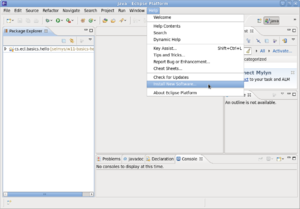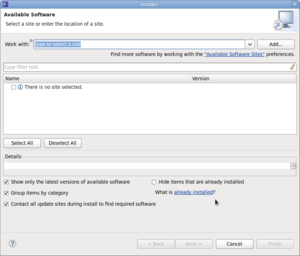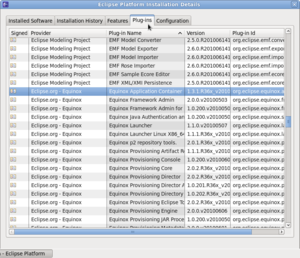Difference between revisions of "OSGi : Install Eclipse Plugins Fedora"
(→So What is Eclipse Equinox) |
|||
| Line 11: | Line 11: | ||
Select the '''Plug-ins''' tab and scroll down to verify that '''Eclipse Equinox''' is installed. | Select the '''Plug-ins''' tab and scroll down to verify that '''Eclipse Equinox''' is installed. | ||
[[Image:plug3.png|left|thumb]]<br style="clear:left;" /> | [[Image:plug3.png|left|thumb]]<br style="clear:left;" /> | ||
| − | == So What is Eclipse Equinox == | + | == So What is Eclipse Equinox? == |
Equinox is an implementation of the OSGi R4 core framework specification, a set of bundles that implement various optional OSGi services and other infrastructure for running OSGi-based systems. | Equinox is an implementation of the OSGi R4 core framework specification, a set of bundles that implement various optional OSGi services and other infrastructure for running OSGi-based systems. | ||
Revision as of 09:12, 23 January 2011
Installing Eclipse onto Fedora 14 - X86_64
- Start with a clean install of Fedora 14, preferably from a live CD. For my examples I used the 64 bit edition.
- When the install is complete, open a terminal window and run yum update to bring your system up to date. You may have to reboot once this is done.
- Install Eclipse (Helios 3.6.1) with the command yum groupinstall "Fedora Eclipse".
- That's it! You can now use Eclipse to build C, C++ or Java programs.
Checking which Plug-ins are Already Installed
Fedora Eclipse comes with many plug-ins preinstalled. To list the installed plug-ins, select Install New Software from the Help menu.
Then, near the bottom of the window, click on What is Already Installed.
Select the Plug-ins tab and scroll down to verify that Eclipse Equinox is installed.
So What is Eclipse Equinox?
Equinox is an implementation of the OSGi R4 core framework specification, a set of bundles that implement various optional OSGi services and other infrastructure for running OSGi-based systems.


